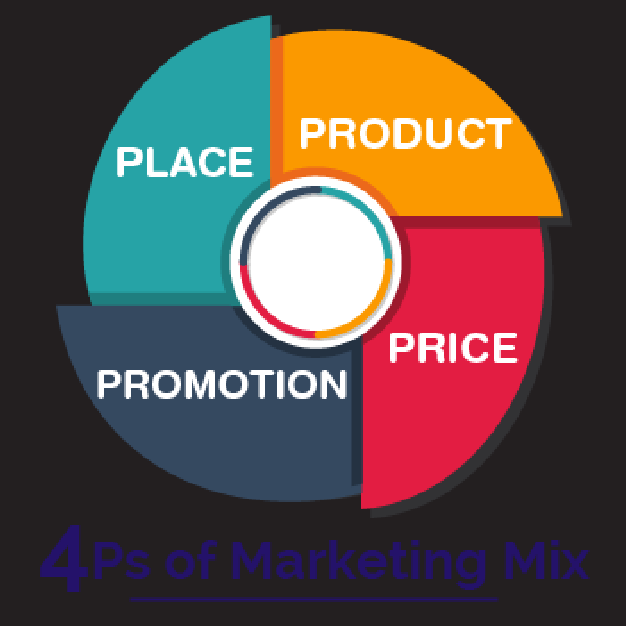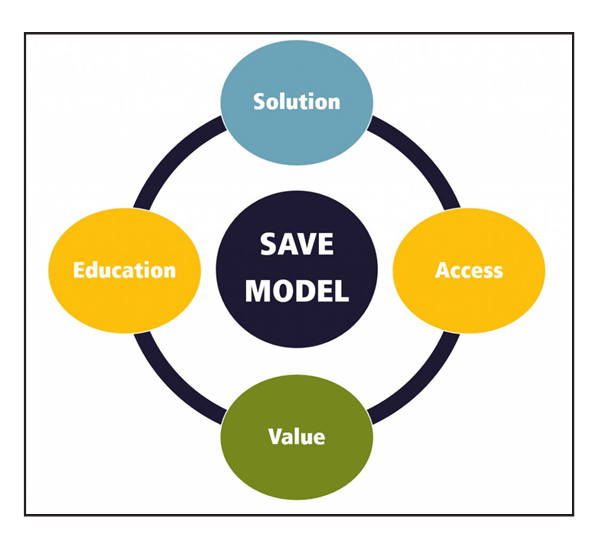Data Science Enabling
In Part 1 of this series, we discussed the importance of statistical data analysis and the concept of the “customer decision tree” for businesses. We learned that creating a
customer decision tree helps tailor marketing efforts and engagement strategies to guide customers through various stages effectively.
In Part 2, we explored how data science can be applied to inventory management to help optimise working capital, reduce carrying
costs, enhance customer service andmaximise profitability.
In this concluding part, we shall discuss how by harnessing the prowess of data and analytics, businesses can gain a profound understanding of their customers, enabling the delivery of bespoke solutions and a customer-centric approach.

Isn’t it amazing how the trusty old 4 Ps of Mar- keting have been the backbone of marketing for ages? They have been the champions of business strategies but hold on tight, because we are about to dive into the world of innovation and disrup- tion!
Picture this: a brand-new marketing framework that’s reshaping the game, turning old conven- tions on their heads. It’s called the SAVE frame- work andit’s not just another acronym – it’s a game-changer! So, what’s the buzz? So, SAVE stands for Solution, Access, Value and Education; and it’s a recipe for success.
From 4 Ps to SAVE - A Paradigm Shift

While the traditional 4 P’s (Product, Place, Price and Promotion) of marketing have been a valua- ble framework for many years, the SAVE frame- work offers a reinterpretation that aligns more closely with the specific needs and dynamics of B2B marketing. Here’s how the SAVE framework can be seen as a reinterpreted version of the 4 Ps for marketers:
Product v/s Solution
The focus has shifted from just products to com- prehensive solutions that address the complex needs of consumers. Companies have to sell in- tegrated solutions or packages of products and services.
Place v/s Access
Access in the SAVE model recognises the impor- tance of making it easy for customers to access these solutions through various channels, in- cluding direct sales, partnerships andonline plat- forms. In an age where most products and servic- es are available online, the term “access” implies more than just a physical location.

Price v/s Value
Pricing can be complex, often involving negoti- ations, custom pricing structures andlong-term contracts. The framework broadens the concept beyond just price. It encompasses the overall per- ceived value that customers derive from a prod- uct or service, considering not only cost but also quality, benefits andcustomer experience.
What seems like a bargain to one person might feel like a splurge to another. And let’s face it; busi- nesses might not always have the wiggle room to match their competition’s rock-bottom prices. So, where does that leave a business?
The focus of the game has to shift beyond the price tag and focus on the genuine value the product injects into the customers’ lives. Once a business has identified the pain points its product addresses, it would be a breeze to spotlight the benefits. Here’s the magic: When people grasp the value a product or service brings to their world, they become more than willing to meet the price point – even if it happens to be a tad higher than what rival businesses are offering. It’s all about perceived value; it trumps price every time.

Promotion vs. Education
The days when promotion alone could do the trick are behind us. Let’s face it; today’s consum- ers are a different breed. Back in the day, folks would patiently endure advertisements during their favourite TV shows andnewspaper ads were a surefire way to reach them. It was simpler be- cause businesses had a captive audience.
Fast forward to today andthe game has changed dramatically. Consumers now wield unprecedent- ed power. They do not have to engage with a com- pany’s promotional content if they don’t want to. The internet has given them a myriad of options. What’s more, online users have an uncanny knack for detecting promotional or advertising messages that are overly focused on selling a product or ser- vice, often in a pushy or aggressive manner from miles away. If they sense a business is merely push- ing a product, they will quickly dismiss the adver- tising as unworthy of their precious time.
So, where does that leave businesses? Well, com- panies today have no choice but to shift gears from a promotional mindset to an educational one. In- stead of shouting, “Buy our product!” from the rooftops, they must now declare, “We’re here to assist you in getting the most out of our product.”
One of the most effective ways to achieve this transformation could be by creating informa- tive, educational content on topics related to their products, right on their company blogs. By tak- ing this approach, companies can establish trust with their customers. This trust, in turn, makes customers more inclined to choose these trusted companies when they are ready to make a pur- chase. It is a subtle yet powerful shift from pro- motion to education andit is the way forward in today’s consumer-centric world.
From Customer-Centric To Value-Driven Approach
In essence, businesses must reorient themselves to the idea of a ‘solution’ replacing the idea of a ‘product’. Products are essentially solutions to
customers’ needs, so the imperative here is to shift businesses’ focus from product-centricity to a customer-centric perspective.
The idea of ‘value’ also replaces the idea of ‘price’. Customers are only willing to pay a price when they recognize the value of a product or service. But this appears easier advocated than realised, as success depends on the ability of businesses being able to acquire data on customers - beyond the usual demographic and economic but on her in- tentions, aspirations, beliefs and more; and to draw meaningful and actionable insights from the data.
The Power of Data

- Customer Understanding and Segmenta- tion: Data science empowers organisations to harness, scrutinise anddecipher vast troves of customer data. This capability offers a pro- found glimpse into their clientele, revealing their activities, motivations, needs, challenges andpreferences. This in-depth understanding becomes the bedrock for precise customer segmentation - a pivotal step in tailoring solu- tions and communication strategies.
- Personalisation: Leveraging data science techniques, such as machine learning, allows businesses to craft personalised interactions and offerings forclients. By analysing historical behaviours and preferences, companies can deliver bespoke solutions.
- Predictive Analytics: The realm of predic- tive analytics, a subset of data science, equips businesses with the foresight to forecast fu- ture trends and customer behaviours. Armed with these insights, companies can proactive- ly offer solutions that are finely attuned to emerging needs and challenges of the market.
Supply Chain Optimisation: In the intricate world of B2B, the management of the supply chain is pivotal. Data science becomes the ally
in optimising inventory levels, streamlining lead times andensuring swift access to products or services. This synchronisation aligns seamlessly with the “Access” facet of the SAVE framework.
- Pricing Strategies: Data science lends inval- uable assistance in crafting dynamic pricing strategies. This approach considers multi- faceted factors, such as market dynamics, competition andclient-specific insights. The result? Pricing that harmonises with the per- ceived value the business delivers to its clien- tele - a core element of SAVE.
- Customer Engagement: Embracing data-driv- en insights, organisations can gain a strategic edge in shaping communication and engage- ment strategies. This means knowing precisely when and how to educate clients about solu- tions, delivering laser-focused messages and- nurturing enduring client relationships – all in sync with the “Education” facet of SAVE.
- Performance Measurement: Data science equips businesses with tools to gauge the effec- tiveness of marketing efforts, sales strategies
- and customer satisfaction. This continuous feedback loop empowers companies to fine- tune their approach continually, ensuring a seamless alignment with the SAVE framework.
- Competitive Analysis: Data science serves as a compass in the realm of competitive intel- ligence. It enables businesses to comprehend how their solutions stack up against competi- tors, offering a window for refining their val- ue propositions and differentiation strategies.
Conclusion
We are changing from traditional marketing methods to groundbreaking sales and market- ing frameworks with new technology and data science. Personalisation, predictive analytics and supply chain optimisation have become allies. It’s not just a sales and marketing revolution; it’s a revelation of possibilities. Embrace the future with data. Customer satisfaction awaits those who dare to innovate. Thanks for joining us. This concludes our series on ‘Transforming Sales & Marketing with Data Science’. We appreciate your support and hope you found this series insightful.

